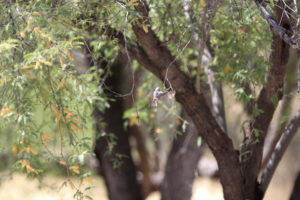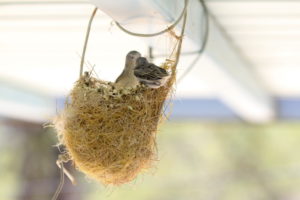Counting raindrops in Cascabel
Rain in the desert is a welcomed affair. A light sprinkle, a massive downpour, or a steady flow for hours. It’s the contrast, the incredible change in temperature, aroma, and “electricity” that makes one want to just stand and watch it come down for hours.
This morning I awoke a little past 5 am to the rumble of the sky above me and the shaking of the construct below, an elevated porch on which I sleep in a tent every night. Pent up, potential electrical charge found repeated orgasmic release in the clouds and surely, to the ground as well, out there, beyond the mesquite that surrounds me.
I was thrilled by the abrupt awakening, the storm a distressed lover who yet unsatisfied by dreams moves into the day with the embrace of thunder. While I lay there for fifteen or twenty minutes, the cool splash of droplets that found their way through the window mesh, the storm was clearly, directly overhead. Sleeping outside, four meters above the ground on a metal deck connected to a metal house, I figure it was the safest place for me to be, or really quite stupid. At that moment my physics brain was unable to discern, so I took the safe bet, gathered my things and hurried inside.
This storm is the first I have experienced here, since purchasing this house and property six months ago. I am reminded of the splendor of the Buffalo Peak Ranch in Colorado where the boundary between the outside and inside of the cabin is thin, just enough to keep the water out, but everything else is welcome in.
Doors wide open on either side of my studio space, a pesky, bold grey striped squirrel who has marauded my garage, compost, tools, and engine compartment of my new car decided to venture in. He stopped about three meters to the right of where I sat, looked to his right, then left, spotted me and darted back out the door. I jumped up and pursued him but he disappeared without a trace. He hasn’t been back … yet.
Time to refill my tea and settle into the tasks at hand. Already, it is half past 1 now, the day gladly spent listening to the rain over Cascabel.














































